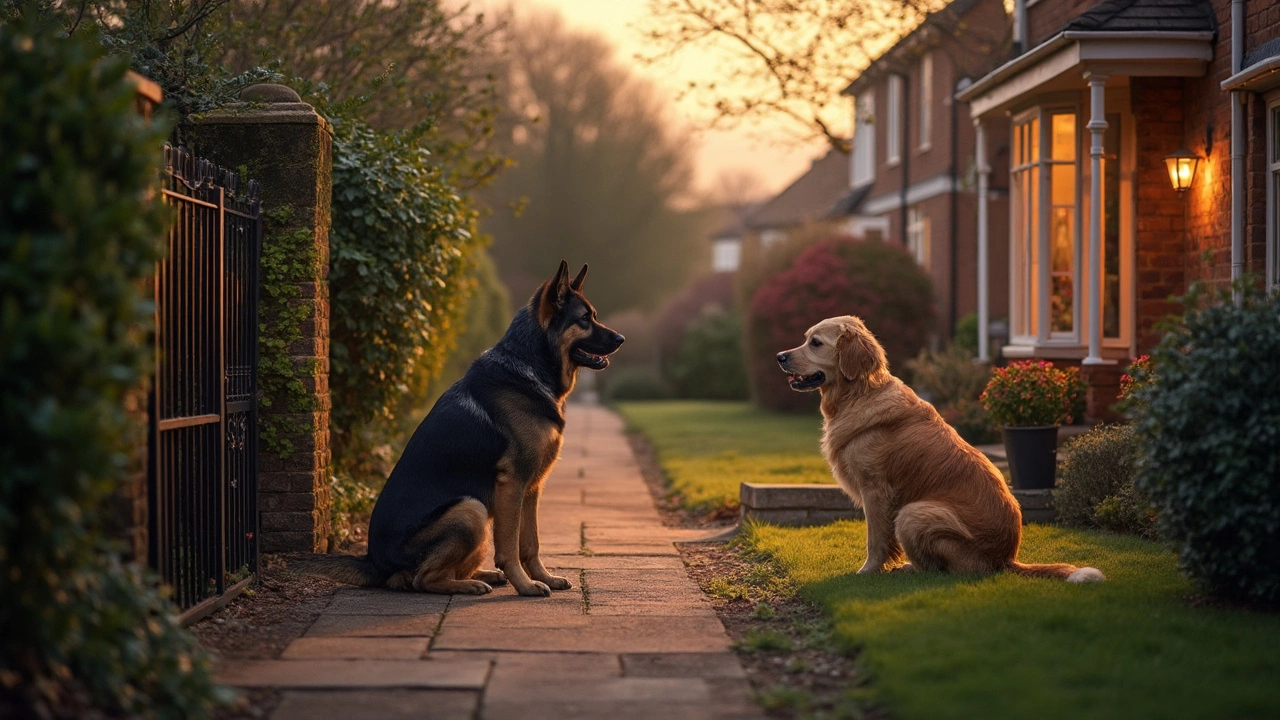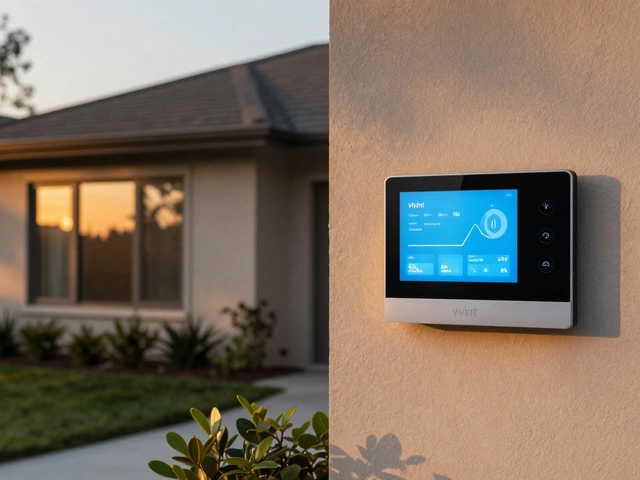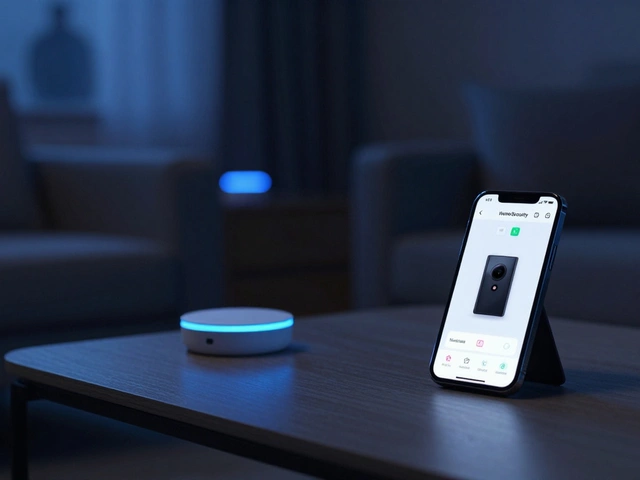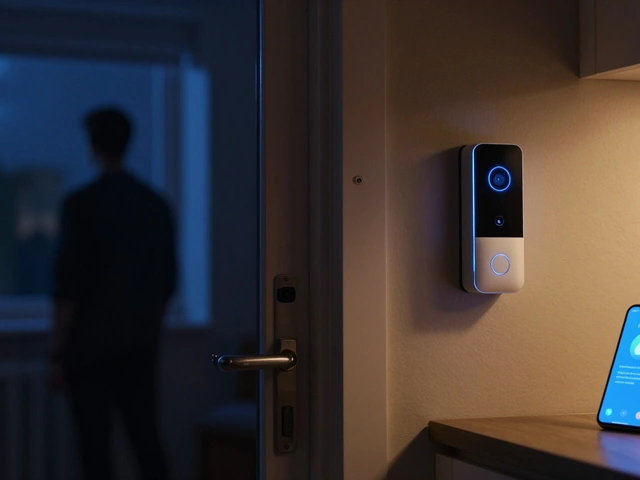Ever wonder what people mean when they say “guard dog” or “alarm dog”? It’s not just a dog that barks. The line between the two isn’t as blurry as you might think—and picking the wrong type can mess with your home’s safety and your neighbors’ sanity.
If you expect a quick warning any time a stranger steps up to your front door, that’s an alarm dog’s time to shine. Their whole job is to make noise—loud and fast. On the flip side, a guard dog does more than bark. Guard dogs are trained to physically stop threats, sometimes stepping between you and danger.
Choosing one comes down to what you need. Some folks just want a living, barking doorbell that won’t scare the mailman half to death. Others want a dog that will make an intruder think twice before stepping one foot closer. Start with your space: live in an apartment with thin walls? Your neighbors will thank you for going alarm dog. Got lots of land and worried about bigger problems? That’s guard dog territory.
- What Makes a Guard Dog?
- How Alarm Dogs Work
- Which Dog Best Fits Your Home?
- Training Differences You Should Know
- Common Breeds and Their Behaviors
- Tips for Choosing Dog-Friendly Alarms
What Makes a Guard Dog?
Here’s the no-nonsense truth: a guard dog is all about protection. This isn’t just a dog that barks when the doorbell rings. Guard dogs are picked and trained for serious jobs. They have the muscle and mindset to step up when something or someone threatening comes near your territory.
Most guard dogs have a strong instinct to defend their family or property. Breeds like German Shepherds, Rottweilers, Dobermans, and Bullmastiffs aren’t just popular picks because they look tough. They’ve got the brains to tell friend from foe and the nerve to stand their ground if danger actually appears. Trained the right way, they only get physical if they really have to. This isn’t about having a mean dog—it’s about control and confidence.
Guard dogs work best when they’re:
- Well-socialized, so they don’t see every stranger as a threat
- Given clear rules and commands (usually in a specific language, so random folks can’t control them)
- Physically fit and healthy, since guarding is hard work
A smart tip? Never skip pro training if you want a real guard dog, not just a pet with a loud bark. Professional trainers can help you bring out the right instincts and avoid the common pitfall of raising a dog that’s unpredictable or too aggressive.
Guard dogs are a major deterrent—not many burglars want to mess with a house that’s got a big, alert dog parked behind the fence. But make no mistake: not every breed, or every dog, can handle this job. You have to be ready for the responsibility and the extra work that comes with it. Otherwise, you might end up with a stressed-out pup or a safety problem on your hands.
How Alarm Dogs Work
Alarm dogs are like living sirens. Their main job? Get your attention fast. They don’t attack or confront intruders—they just make noise as soon as they sense anything unusual. Think of them as the first line of defense for alerting you, not stopping the threat themselves.
Most alarm dogs are super aware of their surroundings. They’ll bark at new faces, sudden movements, or even strange sounds. It’s their nature to warn owners about anything out of the ordinary. Studies from pet behavior centers show that breeds like Miniature Schnauzers or Chihuahuas might weigh under 15 pounds but often react to strangers faster than bigger, quieter breeds.
Here’s what makes a top-notch alarm dog:
- Highly alert, reacting to unfamiliar people, animals, or sounds.
- Barks quickly, usually before a person even gets close to your entryway.
- Doesn’t physically engage or chase—strictly a no-contact warning system.
- Usually smaller breeds, but big dogs can work too if they’re naturally vocal.
Plenty of folks pick alarm dogs because they only want a warning, not a confrontation. If you want peace of mind without the risk of aggressive behavior, alarm dogs are the way to go. Fun fact: Dog barking can sometimes lower the odds of household theft by over 60% compared to completely silent homes, according to recent home security surveys.
Here’s a look at how quickly popular alarm dogs can react when something’s off:
| Breed | Average Bark Response Time |
|---|---|
| Miniature Schnauzer | Within 2 seconds |
| Chihuahua | Under 3 seconds |
| Beagle | 3-4 seconds |
| Poodle | 2-3 seconds |
| Jack Russell Terrier | 1-2 seconds |
If you train a dog early—rewarding them when they bark for real threats and ignoring little things—most can learn the difference between a neighbor passing by or someone actually approaching your door. That training helps reduce pointless barking and keeps you from jumping every time a leaf blows across the porch.
Which Dog Best Fits Your Home?
This comes down to your home life, neighborhood, and what kind of protection you actually need. Not every house or family needs the same thing, and the right pick can save you a ton of headaches down the road.
Say you have small kids, lots of guests, or you’re in an apartment complex where neighbors live just a wall away. In these cases, a true guard dog might be overkill and even risky; you don’t want your dog scaring friends or reacting when a delivery guy shows up. An alarm dog fits better here—barks loud, keeps you in the loop, but stops short of getting physical.
On the other hand, got a big yard, live in a more remote area, or just want added protection for your stuff? Guard dogs can do the job. They’re also usually bigger breeds and need more space to move and patrol, so a cramped apartment is pretty much a non-starter for most of them. Some insurance companies even have restrictions on certain guard dog breeds if you’re renting, so double-check before you make the leap.
Here’s a breakdown of what you might want to weigh before picking:
- guard dog: Needs room to roam, gets real training, for folks who want not just a bark but real backup.
- Alarm dog: Good for apartments, families, folks who want a heads-up but not the hassle of big-dog energy.
- If you travel a lot or have older guests, an alarm dog is simpler to handle and less likely to get into trouble.
- Have valuables or live in a high-risk spot? A guard dog’s presence is often enough to turn off would-be thieves.
Check out some typical traits and needs:
| Dog Type | Ideal Home | Main Job | Common Size |
|---|---|---|---|
| Alarm Dog | Apartment, townhome, family buzz | Give warnings, bark at unfamiliar stuff | Small to medium |
| Guard Dog | House with yard, more isolated spaces | Guard property, act if there’s a real threat | Medium to large |
One last point: don’t expect one dog to do it all. You can train a dog to be alert, but you can’t turn a mellow breed into a tough protector overnight. Look at your lifestyle honestly—and maybe talk to shelters or trainers who know the breeds in real life. The right dog should always fit into your daily routine and not the other way around.

Training Differences You Should Know
Not all dogs are cut out to be guard dog pros, and the training path for each is pretty different. Alarm dogs focus way more on awareness and bark signals, while guard dogs need to learn discipline, self-control, and sometimes even how to show aggression on command. If you care about keeping your home friendly but alert, this could be the deciding factor.
Alarm dog training usually boils down to encouraging the dog’s natural tendency to bark at new noises or people. Most trainers use positive reinforcement—basically, giving treats and praise when the dog alerts you to something unusual. These dogs are never pushed to confront intruders. You want their bark, not their bite. That makes the training process a lot less risky for families and totally doable for most breeds with a loud voice.
Training a guard dog is next-level. It’s not just about barking—it’s about knowing when to stay calm and when to act. This kind of training is best handled by professionals, and it takes months, sometimes even longer. Dogs learn to follow commands, ignore harmless situations, and only respond when there’s a real threat. The wrong signal can cause big problems, so the lessons are more strict and clear.
Here’s how the two types stack up in the training department:
- Alarm Dogs: Focus on barking at unfamiliar sights or sounds, no training for physical confrontation, motivated by treats and praise, good for homes and apartments where you just want an early warning.
- Guard Dogs: Trained to respond and act on threats, need socialization so they aren’t aggressive without cause, require professional help, and stricter rules. Guard dog breeds tend to be larger and more confident by default.
One more thing: a poorly trained guard dog can be a lawsuit waiting to happen. If a dog wrongly attacks a friend or neighbor, you’re responsible. That’s why professionals stress good social skills and clear signals during the process. Always pick training that matches your home’s needs—and never skip your due diligence, especially with breeds known for protective streaks.
Common Breeds and Their Behaviors
Not every dog is cut out to be a guard dog or an alarm dog. There are certain breeds that just do the job better—sometimes, it’s in their genetics. Some breeds are natural watchdogs, while others have been raised for generations to protect and defend.
Here’s how some of the most common breeds stack up when it comes to guarding and alarming:
| Breed | Typical Role | Personality Traits | Behavior Notes |
|---|---|---|---|
| German Shepherd | Guard Dog | Confident, loyal, smart | Often used by police/military; natural protectors |
| Rottweiler | Guard Dog | Powerful, fearless, calm | Loyal to family but wary of strangers |
| Doberman Pinscher | Guard Dog | Alert, energetic, loyal | Fast responders, great deterrents for intruders |
| Great Pyrenees | Guard Dog | Gentle with family, strong-willed | Good at protecting livestock and large properties |
| Chihuahua | Alarm Dog | Alert, vocal, bold (despite size) | Barks at anything new, not a physical deterrent |
| Miniature Schnauzer | Alarm Dog | Lively, alert, friendly | Fast barkers, great for apartment living |
| Poodle | Alarm Dog | Smart, active, quick learners | Sound-sensitive and vocal about strangers |
Here’s a real-world tip: don’t get fooled by size. Small alarm dogs like Chihuahuas or Miniature Schnauzers are loud, quick to bark, and can sound alarms as well as, or sometimes better than, big dogs. They’re not going to fight off a burglar, but they’ll make sure you never miss someone at the door. Guard dogs, on the other hand, have the muscle and training to step up if things go south—just know they need steady training and a confident owner.
Another thing: breed alone isn’t everything. Temperament can vary even within the same litter. If you’re after a specific trait—like steady nerves or nonstop barking—meet the dog’s parents, talk to breeders, or check with local shelters about each dog’s behavior. And always check if your local area has breed bans or restrictions—that might narrow your options before you start.
Tips for Choosing Dog-Friendly Alarms
Picking an alarm system that works with your four-legged buddy can get tricky. Some alarms can freak out a dog so much, they end up causing more trouble than help. That’s why you need alarms that are both effective and safe for your pet’s ears and nerves.
Dogs hear much better than we do. Science backs this up—dogs can hear sounds between 67 Hz and 45,000 Hz, way beyond the human range. So, super high-pitched alarms might actually hurt or stress your dog, even if you can’t hear them at all. If you’ve got a guard dog or alarm dog, you don’t want to mess with their sense of security.
- Go for alarms with pet-friendly motion sensors: Some motion detectors can tell the difference between a human and a dog based on weight and height, which means fewer false alarms when your pooch is doing zoomies in the living room.
- Skip ultrasonic alarms: These can be torture for sensitive dog ears. Alarms that use regular tones or visual alerts are usually much better around animals.
- Placement is everything: Keep sensors and alarms out of your dog’s favorite sleeping or play areas. This cuts down on stress and keeps your dog from messing with the equipment.
- Test your dog’s reaction: Before locking into a system, try it for a day or two. Watch if your dog seems anxious or starts acting weird. If so, look for a different setup.
- Link up with your dog’s habits: Some smart alarms can work with pet trackers, letting you set different modes when your pup is home alone versus out for a walk.
Worried about how popular different alarm features are for pet owners? Here’s a quick data snapshot from a 2024 pet safety survey:
| Alarm Feature | % of Pet Owners Who Prefer |
|---|---|
| Pet-immune motion detection | 68% |
| Smart home integration | 54% |
| No ultrasonic alarms | 77% |
| Remote arming/disarming | 60% |
One last tip: let your alarm company know you have a dog. Some have dog-friendly settings or tips, and can guide you to the best equipment so your security game stays strong without stressing out your best friend.






